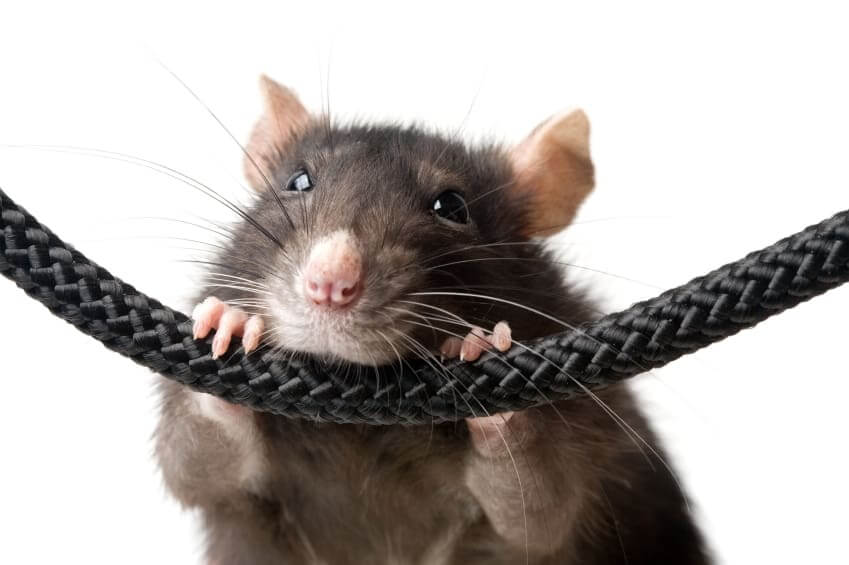What is a Norway Rat? This City Rat is Smarter Than You May Think
By: EarthKind
Would you believe that there’s an animal that can sniff out bombs and landmines, and detect tuberculosis too? They even help researchers cure disease, advance science, and make medical breakthroughs. As if that weren’t enough, they also make cute and cuddly pets!
Rats have a bad reputation. They can be unwelcome pests, but they are also pretty neat little creatures. There are so many different types of rats, from kangaroo rats to pack rats. Today, we’re going to introduce you to what most people recognize as the city rat or common rat — but truth be told, they’re known by a much fancier name — the Norway Rat — and while they’ve certainly got their talents, we know that most of you don’t want them in your homes.
So keep reading, and we’ll tell you how to keep them exactly where they belong.
Norway Rat Facts & Characteristics
Despite its name, there is no evidence that suggests that the Norway rat (rattus norvegicus) comes from Norway. It’s actually believed to have originated from northern China and nearby parts of Asia. They began to spread through Europe during the Middle Ages and eventually to the rest of the world. They likely arrived in the US via ships from Great Britain in the late 1700s, then spread throughout the American Midwest and into Canada. They’re now found in most major cities around the world.
Norway rats are most active at night. They use runways to travel between locations and they nest in burrows at ground level or underground. They usually never wander farther than 300 feet from their burrow.
These pests go by many names including street rat, brown rat, sewer rat, wharf rat, Hanover rat, and barn rat, just to name a few. No matter what you call it, you probably don’t want to find any one of these in your home. Knowing how to identify this rodent will make it easier to keep them out.
What Do They Look Like?
Some Norway rats have a body length of up to 10 inches long with a tail almost EQUAL in length! And they usually weigh about 1/2 a pound (8 ounces). They have small little eyes and small soft ears. The back of a Norway rat is usually brown or dark gray with lighter coloring on their tummy.
Although rats will act aggressively towards newcomers, they often live in family groups — this means that if you see signs of one rat, the rest of his family isn’t far behind! And that family could be quite large. The gestation period of female Norway rats is only 21 days, and they become fertile only 18 hours after giving birth. They can have up to 12 litters per year, with each litter ranging from 6-12 pups.
The Norway rat differs from a black rat (Rattus rattus), also known as a roof rat. Brown rats are larger than black rats, but in proportion to their head and body, their eyes, ears, and tails are smaller. Their droppings are also different. According to rodentologist, Bobby Corrigan, Ph.D., black rats’ droppings are slightly curved with pointed ends and Norway rats have larger droppings that are blunt on the ends.
Keep your home pest free with simple, effective solutions. Subscribe and save!
Why Brown Rats Come Into Your Home
Rats are motivated by the same needs as you and I: food, water, and shelter. Despite the malicious picture painted of rats invading a nursery in Disney’s Lady and the Tramp, they really don’t want to bother people, but they do want the same things as us — which can lead to a bit of conflict.
A few of the Norway rat’s favorite foods include:
- Cereal, crackers, and other grains.
- Dog food (or just about any pet food, for that matter!).
- Macaroni and cheese, scrambled eggs, cooked corn.
- Meat, nuts, and fruit.
- ANY scraps from your garbage.
Survival instincts encourage rats to choose the path of least resistance. This means if your home offers easy access to their wants and needs, they will find a way inside — but, if your home is unwelcoming, they will move along to the next best thing.
Keep Norway Rats from Making Your Home Theirs
If you want these street rats to keep on going past your home, make sure you aren’t waving the welcome flag. You can make your home unwelcoming by following our 3 step rat control method:
- Clean it up. Remove anything that is attractive to them: easy-access food sources, standing water (this includes your pet’s water dish), places to hide, and nesting materials. Look inside and outside your home. Tidy up your basement and storage areas. Use garbage cans with a fitted lid, trim trees and shrubs back away from the house and along the fence line, keep wood or compost piles a safe distance from buildings, and pick up clutter or debris that could offer shelter to rodents.
- Seal it up. Block potential entry points so they can’t get inside in the first place. Rats can fit through openings that are only a 1/2 an inch, so gaps around plumbing or electrical outlets, dryer vents, rips or tears in window screens, or even a door left open for just a minute are all welcome signs. This can also help with pest control for other types of pests.
- Pouch it up. Place Stay Away® Rodent, a botanical repellent pouch, around your home. This will guarantee you are protected against rodent intrusions. Our scent-based repellent works by overwhelming a rat’s highly developed sense of smell — sending them packing to look for food and shelter somewhere else, instead of staying in a place where their most valuable tool, their nose, is out of order.
The more you know about this pest, the easier it is to prevent rat infestations. Rodent prevention is the best way to protect yourself and your property from rats. It is also safer for us, our pets and families, and gentler for the rats, who are interesting creatures that play important roles for us and our planet.









 day
day